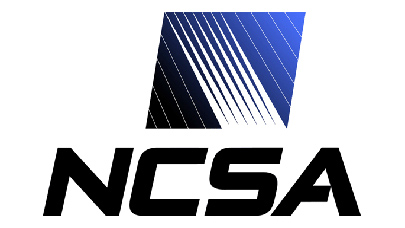
For Earth Day, SDSC Greens Up Its Batteries
April 22, 2022
Just in time for Earth Day, the San Diego Supercomputer Center (SDSC) has announced that it has replaced tens of thousands of pounds of toxic batteries with a m Read more…

Comet Supercomputer Supports Sickle Cell Disease Discovery
December 9, 2020
Sickle cell disease afflicts around a hundred thousand Americans, causing their red blood cells to harden, compress into the namesake C-shapes, clog small blood Read more…

Researchers Use Comet to Examine a DNA-Editing Enzyme
March 14, 2020
Genome editing stands to change the trajectory of human civilization, with massive implications for treatments of any genetic disease and potential for even bro Read more…

Comet Helps Simulate a Rare Volcanic Tsunami
March 7, 2020
When a volcano in or under the ocean violently erupts, the massive upheaval of earth, followed by its rapid descent, can, occasionally, produce a second major d Read more…

San Diego Supercomputer Center to Welcome ‘Expanse’ Supercomputer in 2020
July 18, 2019
With a $10 million dollar award from the National Science Foundation, San Diego Supercomputer Center (SDSC) at the University of California San Diego is procuri Read more…

Combining Machine Learning and Supercomputing to Ferret out Phishing Attacks
May 23, 2019
The relentless ingenuity that drives cyber hacking is a global engine that knows no rest. Anyone with a laptop and run-of-the-mill computer smarts can buy or re Read more…

Larry Smarr Helps NCSA Celebrate 30th Anniversary
September 20, 2016
Throughout the past year, the National Center for Supercomputing Applications has been celebrating its 30th anniversary. On Friday, Larry Smarr, whose unsolicited 1983 proposal to the National Science Foundation (NSF) begat NCSA in 1985 and helped spur NSF to create not one but five national centers for supercomputing, gave a celebratory talk at NCSA. Read more…

New Approach to Computationally Designing Drugs for GPCRs
September 8, 2016
Modeling protein interactions with drugs has long been computationally challenging. One obstacle is these interactions often take relatively long to occur and conventional molecular dynamics simulation is insufficient. This week a group of researchers, using several EXSEDE supercomputers, report a hybrid in silico-experimental approach that shows promise as a drug design tool for use with G protein-coupled receptors (GPCRs) Read more…

- Click Here for More Headlines

Whitepaper
Transforming Industrial and Automotive Manufacturing
In this era, expansion in digital infrastructure capacity is inevitable. Parallel to this, climate change consciousness is also rising, making sustainability a mandatory part of the organization’s functioning. As computing workloads such as AI and HPC continue to surge, so does the energy consumption, posing environmental woes. IT departments within organizations have a crucial role in combating this challenge. They can significantly drive sustainable practices by influencing newer technologies and process adoption that aid in mitigating the effects of climate change.
While buying more sustainable IT solutions is an option, partnering with IT solutions providers, such and Lenovo and Intel, who are committed to sustainability and aiding customers in executing sustainability strategies is likely to be more impactful.
Learn how Lenovo and Intel, through their partnership, are strongly positioned to address this need with their innovations driving energy efficiency and environmental stewardship.
Download Now
Sponsored by Lenovo
Whitepaper
How Direct Liquid Cooling Improves Data Center Energy Efficiency
Data centers are experiencing increasing power consumption, space constraints and cooling demands due to the unprecedented computing power required by today’s chips and servers. HVAC cooling systems consume approximately 40% of a data center’s electricity. These systems traditionally use air conditioning, air handling and fans to cool the data center facility and IT equipment, ultimately resulting in high energy consumption and high carbon emissions. Data centers are moving to direct liquid cooled (DLC) systems to improve cooling efficiency thus lowering their PUE, operating expenses (OPEX) and carbon footprint.
This paper describes how CoolIT Systems (CoolIT) meets the need for improved energy efficiency in data centers and includes case studies that show how CoolIT’s DLC solutions improve energy efficiency, increase rack density, lower OPEX, and enable sustainability programs. CoolIT is the global market and innovation leader in scalable DLC solutions for the world’s most demanding computing environments. CoolIT’s end-to-end solutions meet the rising demand in cooling and the rising demand for energy efficiency.
Download Now
Sponsored by CoolIT
Advanced Scale Career Development & Workforce Enhancement Center
Featured Advanced Scale Jobs:
HPCwire Resource Library
HPCwire Product Showcase
© 2024 HPCwire. All Rights Reserved. A Tabor Communications Publication
HPCwire is a registered trademark of Tabor Communications, Inc. Use of this site is governed by our Terms of Use and Privacy Policy.
Reproduction in whole or in part in any form or medium without express written permission of Tabor Communications, Inc. is prohibited.
























